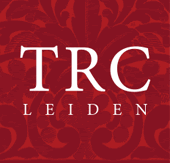Ikat is a dyeing technique that creates a patterned textile by tightly binding individual yarns (warp, weft or both) or bundles of yarns. The threads are then dyed (as a generalization the red comes from saffron, blacks from pomegranate skins, red from cochineal insects, while blues come from indigo). Where there is a binding the dye is ‘resisted’ and keeps the underlying or original colour.
The process of binding and unbinding may be repeated several times to create multiple colours along a thread or bundle of threads, in a specific order. The threads are then woven in such a way that the different colours create a pattern and motifs. Three or more colours, for example, are often used to create intricate patterns that often range from white to a dark blue or purple colour.
In the past, the more luxurious ikat cloths were made of silk. As a generalisation, during the 19th and early 20th centuries women in Central Asia were responsible for looking after the silk moths and caterpillars, as well as the reeling of silk thread, while men did the binding, dyeing and weaving of the cloth.
Uzbekistan and in particular the cities of Bokhara and Samarkand, as well as the Ferghana Valley, were famous for the production of ikats, localled called abr-bandi (‘cloud tying’) and depictions of men wearing what appear to be ikat garments date back to at least the 18th century. It would appear that the 19th century was a peak period for the production of complicated and colourful silk ikats, and there would appear to be a decline since then. During the Soviet period the production of ikats was encouraged, but this was done in factory situations where the designs, production, materials (often synthetics), and so forth could be tightly controlled.
 Woman with Uzbek ikat coat, standing outside of a yurt, early 20th century. Digitally enhanced photograph. Library of Congress.Use of ikats
Woman with Uzbek ikat coat, standing outside of a yurt, early 20th century. Digitally enhanced photograph. Library of Congress.Use of ikats
The most common use for ikats in Central Asia was for the clothing of both men and women. The wearing of silk ikat was regarded as a status symbol, so people would wear multiple layers of robes (up to ten garments in some cases) in order to indicate the wearer’s position and wealth. Ikats were also used at weddings (especially as dowry gifts) and for wrapping new born babies, as well as for soft furnishings such as prayer rugs and wall hangings.
With respect to trade, Central Asia played an important role in the so-called Silk Road and ikats were prestigious items that were traded in both directions. In addition, ikat robes were an important part of the honour system called khilat, whereby a high ranking man or woman would give a lesser person an item of clothing as a gift.


